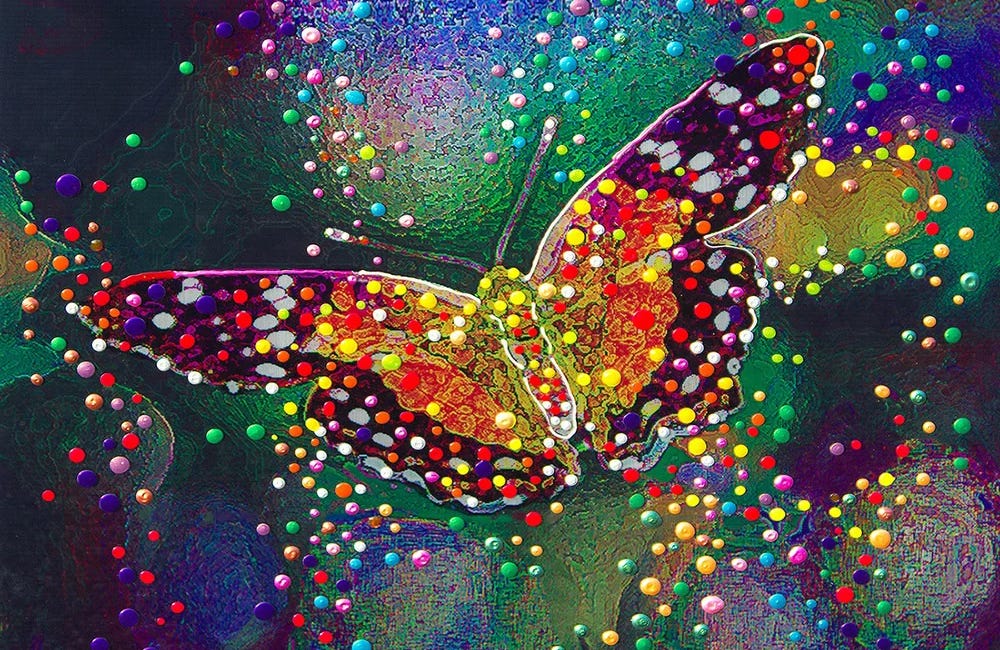The Matrix, The Wizard of Oz, Alchemy, and Schizoanalysis: A Journey of Transformation
Few films have captured the philosophical imagination quite like The Matrix (1999). While often discussed in terms of simulation theory and Baudrillard’s Simulacra and Simulation, the film also aligns with the transformative journeys found in The Wizard of Oz, alchemical symbolism, and Deleuze and Guattari’s schizoanalysis. This article explores how The Matrix reflects the process of self-transformation, linking it to alchemical stages, Dorothy’s journey in The Wizard of Oz, and the Deleuzian concept of deterritorialization.
The Matrix as a Journey of Self-Transformation
Like The Wizard of Oz, The Matrix presents a protagonist (Neo/Dorothy) who lives in a controlled, illusory world (Kansas/The Matrix) before being violently thrown into a journey of awakening. Their respective paths mirror the three stages of alchemical transformation: Nigredo (dissolution), Albedo (illumination), and Rubedo (integration).
1. Nigredo (Blackening): The Breakdown of the Old Self
In alchemy, Nigredo represents dissolution and the breaking down of the old self. This is a stage of crisis and disillusionment.
Dorothy’s Tornado / Neo’s Red Pill: Both characters experience a violent shift that removes them from their false reality. Dorothy is swept into Oz by a tornado, while Neo takes the red pill and wakes up in a dystopian wasteland.
Death of the Ego: Neo’s former identity, Thomas Anderson, is shattered as he realizes the Matrix is an illusion. Likewise, Dorothy realizes that Oz follows different rules from Kansas.
This stage aligns with Deleuze and Guattari’s concept of deterritorialization—a moment when an individual is removed from familiar structures and forced into a new, undefined state.
2. Albedo (Whitening): Awakening and Purification
Albedo represents purification, learning, and self-awareness.
The Yellow Brick Road / Neo’s Training: Dorothy follows the Yellow Brick Road, meeting characters (Scarecrow, Tin Man, and Cowardly Lion) who represent wisdom, love, and courage. Similarly, Neo undergoes training with Morpheus, learning to let go of his previous limitations.
Encountering the Oracle: In both stories, there is a deceptive authority figure. Dorothy meets the Wizard, who seems all-powerful but is ultimately a fraud. Neo meets the Oracle, who tells him he is not The One—prompting him to let go of external validation and find his own power.
According to schizoanalysis, fixed identities are illusions. Neo is not The One because he believes he isn’t. He must break free from rigid categories and enter a state of pure becoming.
3. Rubedo (Reddening): Integration and Mastery
Rubedo is the final stage of alchemical transformation, representing enlightenment and self-mastery.
Dorothy’s Homecoming / Neo’s Resurrection: Dorothy learns that “there’s no place like home,” realizing she had the power to return all along. Neo, after being shot, resurrects and sees the Matrix as code, fully transcending its rules.
Becoming a Body Without Organs (BwO): In Deleuzian terms, Neo achieves a state of pure potential, where he is no longer bound by external structures. The “self” dissolves, allowing him to manipulate the Matrix effortlessly.
Neo doesn’t return to being Thomas Anderson, nor does Dorothy return as the same girl. They integrate their experiences and transcend their previous selves.
The Matrix and Schizoanalysis: Escaping the Control System
Deleuze and Guattari’s schizoanalysis critiques traditional psychoanalysis, arguing that capitalist society territorializes individuals into rigid roles. In The Matrix:
The Matrix as Capitalist Overcoding: The system enforces strict identities (office worker, rebel, agent), just as capitalism categorizes people into consumers, workers, and citizens.
Neo as a Schizophrenic Subject: Schizoanalysis sees schizophrenia as a model for breaking free from rigid identities. By the end, Neo is no longer a subject within the Matrix—he becomes a force of change.
The Oracle and the Illusion of Fixed Identity: Schizoanalysis rejects the idea of a “true self.” The Oracle understands this, guiding Neo not to a fixed destiny but toward an awareness that he is always becoming.
Conclusion: Transformation as a Process, Not a Destination
Whether through The Matrix, The Wizard of Oz, alchemy, or schizoanalysis, transformation is never about returning to who you were—it’s about transcending previous limits and embracing infinite potential. Neo doesn’t escape the Matrix by running; he masters it by seeing beyond illusions. Dorothy’s journey is not about finding a new world but realizing she had the power to shape her reality all along.
True awakening comes when we stop searching for external validation and embrace the fluid, ever-changing nature of reality. The Matrix is not just about breaking free—it’s about learning to create in a world where nothing is fixed and everything is possible.
The Endless Cycle of Transformation
Introduction: Many seekers of truth experience deep psychological and spiritual transformation, often feeling as though they have moved through a complete process of healing—only to find themselves facing the same existential loops again. This experience mirrors ancient mystical traditions, alchemical processes, and modern philosophical insights, reveal…
Reclaiming Agency in a Programmed World: How to Break Free from Societal, Media, and Algorithmic Influence
In an age where algorithms curate our newsfeeds, societal norms dictate our behavior, and media narratives shape our perceptions, the concept of individual agency feels increasingly elusive. As Jack Dorsey, co-founder of Twitter, once said, "Algorithms are definitively programming us, and it's very hard to predict what they'll do. We need more agency, l…





